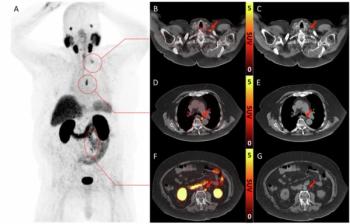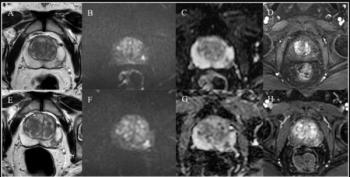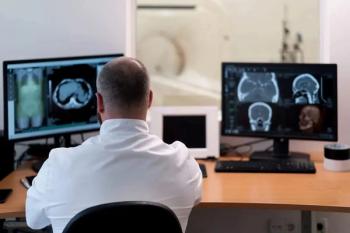
Whole-body MR shows clinical promise, but not for screening
Whole-body MR imaging is a powerful clinical tool with wide-ranging clinical applications, both oncologic and nononcologic. It has the potential to dramatically alter the practice of radiology, according to Dr. Stephen Eustace, a radiologist from the
Whole-body MR imaging is a powerful clinical tool with wide-ranging clinical applications, both oncologic and nononcologic. It has the potential to dramatically alter the practice of radiology, according to Dr. Stephen Eustace, a radiologist from the Mater Misericordiae and Cappagh National Orthopaedic Hospital in Dublin.
At Saturday's "ECR meets" U.K. and Ireland session, which featured four peer-reviewed presentations by bright young radiologists from the two host countries, Eustace traced the development of whole-body MR from 1997 to 2004.
The typical examination time has fallen from 30 to 10 minutes because of the introduction of body coils and tabletop extenders, automated image processing and realignment, and review of images at workstations.
"We've gone about as far as we can using this technique with existing contrast mechanisms, but it can be dramatically improved by developments in molecular markers," Eustace said. "The technique can be made more effective by increasing its speed through the use of parallel imaging. We can also improve how the images are reviewed."
Several problems remain, however. As an oncologic tool, a normal whole-body MR scan does not necessarily mean a patient is disease-free. It cannot detect colon and breast cancer, and this means it is appropriate to call the whole-body MRI "screening."
"Another fear is that the examination is technically involved and it will congest the routine MR list. But in fact it is simple, well received by radiographers, can be performed in 30 minutes in three planes, and is easily interpreted," he said.
The critical factor is to determine when whole-body MR is valuable in clinical practice. Eustace said it is definitely of benefit as an alternative to a bone scan, in assessment of muscle inflammation, and as a nonionizing follow-up of oncologic patients on chemotherapy.
The technique also has research and development potential, and ongoing multicenter trials are focusing on the lung, breast, and myeloma.
Eustace advised caution over the use of whole-body MR as a screening tool.
"It has been said that screening is the most powerful way known to create illness for the financial benefit of doctors. Many patients develop VOMIT syndrome (victims of modern imaging technology), and it leads to anxiety, multiple further investigations, discovery of pseudodisease, and ultimately anger and resentment," he said.
Outside of oncology, whole-body MR may have applications in muscle disease, autopsy, total body mass index, and whole-body MR angiography. Eustace took the brave step of showing a scan of his own body and commented on the ability of a good suit to hide fatty deposits. He concluded that whereas imaging used to be an adjunct to clinical examination, in the future clinical examinations will become an adjunct to imaging.
In the same session, Dr. Sujal R. Desai from King's College London spoke about the pitfalls of HRCT diagnosis.
"At the tender age of 42, it's very flattering for me to be referred as ?young' for a change," he joked.
The two other speakers were Dr. F. Gleeson from Oxford, U.K., and Dr. C. Collins from Dublin.
Newsletter
Stay at the forefront of radiology with the Diagnostic Imaging newsletter, delivering the latest news, clinical insights, and imaging advancements for today’s radiologists.






























